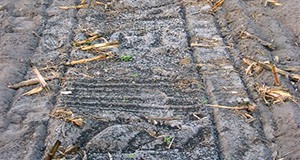 Biosolids are the liquid, semisolid, and solid fractions of the treated waste stream from a domestic waste water treatment facility. This 5-page fact sheet, part of the Florida Biosolids series, provides an overview of biosolids, biosolids classes, pathogen reduction, vector attraction reduction, and metal contaminants, and also discusses the purpose, applicability, and history of Chapter 62-640, Florida Administrative Code. Written by John Hallas, Ann C. Wilkie, and Cheryl L. Mackowiak, and published by the UF Department of Soil and Water Science, December 2015.
Biosolids are the liquid, semisolid, and solid fractions of the treated waste stream from a domestic waste water treatment facility. This 5-page fact sheet, part of the Florida Biosolids series, provides an overview of biosolids, biosolids classes, pathogen reduction, vector attraction reduction, and metal contaminants, and also discusses the purpose, applicability, and history of Chapter 62-640, Florida Administrative Code. Written by John Hallas, Ann C. Wilkie, and Cheryl L. Mackowiak, and published by the UF Department of Soil and Water Science, December 2015.
http://edis.ifas.ufl.edu/ss635
Author: Amanda Quintos
Datos sobre la proteina
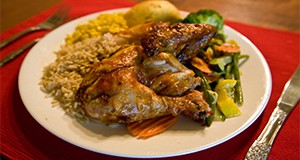 Our bodies are made of many proteins. They can make 11 of the amino acids that are needed to make protein but cannot make the other nine, so we must get them from our diet. This 3-page fact sheet is the Spanish version of Facts about Protein (FSHN15-01/FS261). It provides an overview of protein basics, roles of proteins in the body, recommended intake, sources of protein, and healthier protein choices. Written by Nicole C. Agro and Wendy J. Dahl, and published by the UF Department of Food Science and Human Nutrition.
Our bodies are made of many proteins. They can make 11 of the amino acids that are needed to make protein but cannot make the other nine, so we must get them from our diet. This 3-page fact sheet is the Spanish version of Facts about Protein (FSHN15-01/FS261). It provides an overview of protein basics, roles of proteins in the body, recommended intake, sources of protein, and healthier protein choices. Written by Nicole C. Agro and Wendy J. Dahl, and published by the UF Department of Food Science and Human Nutrition.
http://edis.ifas.ufl.edu/fs272
Native Aquatic and Wetland Plants: Duck Potato, Sagittaria lancifolia
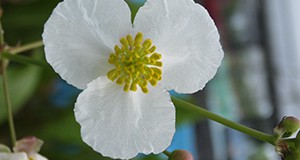 This 3-page fact sheet discusses the classification, description, habitat, propagation, and uses of duck potato, an aquatic perennial that typically grows in swampy ground or standing water in ponds, lakes, streams, and ditches and usually blooms in the spring. Written by Kimberly A. Moore, Luci E. Fisher, Carl J. Della Torre III, and Lyn A. Gettys, and published by the UF Department of Agronomy, December 2015.
This 3-page fact sheet discusses the classification, description, habitat, propagation, and uses of duck potato, an aquatic perennial that typically grows in swampy ground or standing water in ponds, lakes, streams, and ditches and usually blooms in the spring. Written by Kimberly A. Moore, Luci E. Fisher, Carl J. Della Torre III, and Lyn A. Gettys, and published by the UF Department of Agronomy, December 2015.
http://edis.ifas.ufl.edu/ag403
Native Aquatic and Wetland Plants: Cardinal Flower, Lobelia cardinalis
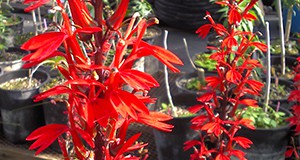 This 3-page fact sheet discusses the classification, description, habitat, propagation, and use of cardinal flower, an aquatic perennial that is commonly found in stream banks and swamps. Written by Kimberly A. Moore, Luci E. Fisher, Carl J. Della Torre III, and Lyn A. Gettys, and published by the UF Department of Agronomy, December 2015.
This 3-page fact sheet discusses the classification, description, habitat, propagation, and use of cardinal flower, an aquatic perennial that is commonly found in stream banks and swamps. Written by Kimberly A. Moore, Luci E. Fisher, Carl J. Della Torre III, and Lyn A. Gettys, and published by the UF Department of Agronomy, December 2015.
http://edis.ifas.ufl.edu/ag402
Native Aquatic and Wetland Plants: Blue-Eyed Grass, Sisyrinchium angustifolium
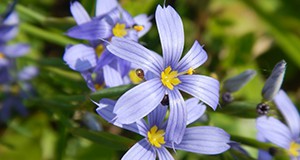 This 2-page fact sheet discusses the classification, description, habitat, propagation, and uses of blue-eyed grass, an aquatic perennial native to Florida. Written by Kimberly A. Moore, Luci E. Fisher, Carl J. Della Torre III, and Lyn A. Gettys, and published by the UF Department of Agronomy, December 2015.
This 2-page fact sheet discusses the classification, description, habitat, propagation, and uses of blue-eyed grass, an aquatic perennial native to Florida. Written by Kimberly A. Moore, Luci E. Fisher, Carl J. Della Torre III, and Lyn A. Gettys, and published by the UF Department of Agronomy, December 2015.
http://edis.ifas.ufl.edu/ag401
Why We Should Be Concerned about Methicillin-Resistant Staphylococcus aureus (MRSA)
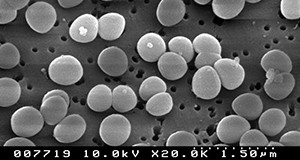 Treatment and complete resolution of MRSA infections can be extremely challenging, since many MRSA strains are multidrug-resistant. This 6-page fact sheet provides an overview of MRSA, different strains, risk factors, symptoms, prevention, and the pathogen’s effects on human health and agriculture. Written by Austin B. Mogen and Kelly C. Rice, and published by the UF Department of Microbiology and Cell Science, September 2015.
Treatment and complete resolution of MRSA infections can be extremely challenging, since many MRSA strains are multidrug-resistant. This 6-page fact sheet provides an overview of MRSA, different strains, risk factors, symptoms, prevention, and the pathogen’s effects on human health and agriculture. Written by Austin B. Mogen and Kelly C. Rice, and published by the UF Department of Microbiology and Cell Science, September 2015.
http://edis.ifas.ufl.edu/mb006
Breast Cancer: Preparing for Surgery
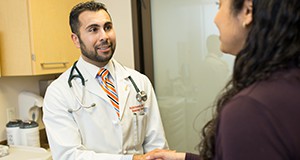 Once you and your doctor schedule your breast cancer surgery, you may have additional questions about how you can prepare for your operation. This 5-page fact sheet provides information to help you get ready for breast cancer surgery through a brief overview of common surgical options, medical appointments, social support systems, and standard surgical procedures as well as reactions and memories of women who have gone through this experience. Written by Martha C. Monroe and Barbara F. Shea, and published by the UF Department of Family, Youth and Community Sciences. Revised February 2016.
Once you and your doctor schedule your breast cancer surgery, you may have additional questions about how you can prepare for your operation. This 5-page fact sheet provides information to help you get ready for breast cancer surgery through a brief overview of common surgical options, medical appointments, social support systems, and standard surgical procedures as well as reactions and memories of women who have gone through this experience. Written by Martha C. Monroe and Barbara F. Shea, and published by the UF Department of Family, Youth and Community Sciences. Revised February 2016.
http://edis.ifas.ufl.edu/fy899
Smart Strawberry Advisory System for Mobile Devices
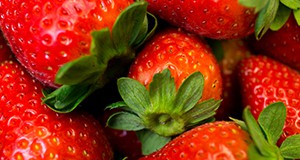 Like the web-based SAS, the SAS: Strawberry Advisory System mobile app monitors real-time and forecast weather conditions that increase the risk for Botrytis (gray mold) and anthracnose fruit rots, providing risk level information for each disease. The app provides easy access to the information growers need to make spraying decisions in the field, saving them time, helping improve disease control, and avoiding unnecessary fungicide applications. This 3-page fact sheet provides an overview of the SAS mobile app. Written by Clyde W. Fraisse, Natalia Peres, and José Henrique Andreis, and published by the UF Department of Agricultural and Biological Engineering, August 2015.
Like the web-based SAS, the SAS: Strawberry Advisory System mobile app monitors real-time and forecast weather conditions that increase the risk for Botrytis (gray mold) and anthracnose fruit rots, providing risk level information for each disease. The app provides easy access to the information growers need to make spraying decisions in the field, saving them time, helping improve disease control, and avoiding unnecessary fungicide applications. This 3-page fact sheet provides an overview of the SAS mobile app. Written by Clyde W. Fraisse, Natalia Peres, and José Henrique Andreis, and published by the UF Department of Agricultural and Biological Engineering, August 2015.
http://edis.ifas.ufl.edu/ae516
Basics of Quantifying N Sources and Fates on the University of Florida Campus
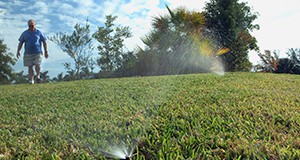 Landscapes, recreational areas, and sports fields are important parts of the University of Florida campus that receive nitrogen (N) fertilization to maintain the health and quality of their plants. However, nitrogen can be lost from the landscape through runoff in storm water or leaching into groundwater, both fates leading to pollution of the receiving water bodies. Human activities can also cause losses of nitrogen. Therefore, educating people about nitrogen cycling in the urban environment is critical for the development of solutions to the environmental problems caused by nitrogen loss. This 5-page fact sheet discusses nitrogen mass budgets, land uses in a major university, and nitrogen sources and fates associated with different land uses on campus. Written by Jiexuan Luo and George Hochmuth, and published by the UF Department of Soil and Water Science.
Landscapes, recreational areas, and sports fields are important parts of the University of Florida campus that receive nitrogen (N) fertilization to maintain the health and quality of their plants. However, nitrogen can be lost from the landscape through runoff in storm water or leaching into groundwater, both fates leading to pollution of the receiving water bodies. Human activities can also cause losses of nitrogen. Therefore, educating people about nitrogen cycling in the urban environment is critical for the development of solutions to the environmental problems caused by nitrogen loss. This 5-page fact sheet discusses nitrogen mass budgets, land uses in a major university, and nitrogen sources and fates associated with different land uses on campus. Written by Jiexuan Luo and George Hochmuth, and published by the UF Department of Soil and Water Science.
http://edis.ifas.ufl.edu/ss641
Volunteer Training Series: Recognizing Young People
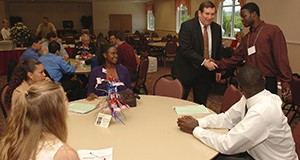 Developing a sense of belonging is one of the Essential Elements of a positive youth development experience. Creating an inclusive environment in your 4-H club programs and activities can help you achieve this goal. Providing many forms of recognition for all, not just for those who excel in competition with other youth, also supports this sense of belonging. This 5-page fact sheet discusses recognition of participation, progress toward goals, standards of excellence, peer competition, and cooperation in the context of 4-H Clubs. Written by Georgene Bender, Tracy Tesdall, and Judith Levings, and published by the UF Department of 4-H Youth Development, November 2015.
Developing a sense of belonging is one of the Essential Elements of a positive youth development experience. Creating an inclusive environment in your 4-H club programs and activities can help you achieve this goal. Providing many forms of recognition for all, not just for those who excel in competition with other youth, also supports this sense of belonging. This 5-page fact sheet discusses recognition of participation, progress toward goals, standards of excellence, peer competition, and cooperation in the context of 4-H Clubs. Written by Georgene Bender, Tracy Tesdall, and Judith Levings, and published by the UF Department of 4-H Youth Development, November 2015.
http://edis.ifas.ufl.edu/4h370
Healthy Living: Reliable Websites
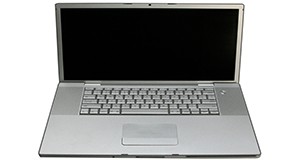 The number of resources available online grows every day. Unfortunately, there are no regulations to ensure that the information on these websites is accurate. Older adults can readily access reliable information on the Internet by focusing on government and education sites. This 2-page fact sheet is a major revision that provides a list of trustworthy Internet sources related to nutrition, health, food safety, and general interest for older adults. Written by Linda B. Bobroff and Leigh Ann Martin, and published by the UF Department of Family, Youth and Community Sciences, revised January 2016.
The number of resources available online grows every day. Unfortunately, there are no regulations to ensure that the information on these websites is accurate. Older adults can readily access reliable information on the Internet by focusing on government and education sites. This 2-page fact sheet is a major revision that provides a list of trustworthy Internet sources related to nutrition, health, food safety, and general interest for older adults. Written by Linda B. Bobroff and Leigh Ann Martin, and published by the UF Department of Family, Youth and Community Sciences, revised January 2016.
http://edis.ifas.ufl.edu/fy102
School Garden: Plastic Wading Pool Hydroponics
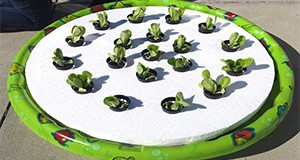 School gardens are a great way to get youth interested in where their food comes from. Hydroponics, or the cultivation of plants in liquid nutrient solutions rather than in soil, is a fascinating way to teach students about food systems. This 4-page fact sheet lists the materials, tools, and construction steps needed to grow a variety of crops in a wading pool hydroponic garden. Written by Edmund L. Thralls, and published by the UF Department of Environmental Horticulture, October 2015.
School gardens are a great way to get youth interested in where their food comes from. Hydroponics, or the cultivation of plants in liquid nutrient solutions rather than in soil, is a fascinating way to teach students about food systems. This 4-page fact sheet lists the materials, tools, and construction steps needed to grow a variety of crops in a wading pool hydroponic garden. Written by Edmund L. Thralls, and published by the UF Department of Environmental Horticulture, October 2015.
http://edis.ifas.ufl.edu/ep525
Florida Biosolids: Management and Land Application Rules
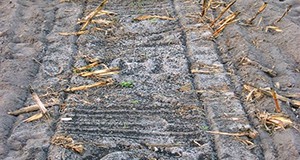 Biosolids are the liquid, semisolid, and solid fractions of the treated waste stream from a domestic wastewater treatment facility (WWTF). On August 29, 2010, the Florida Department of Environmental Protection (FDEP) formally adopted its rule for the management of wastewater biosolids, Chapter 62-640, Florida Administrative Code (F.A.C. 2010). This 6-page fact sheet from the Florida Biosolids series covers applicability of the rule, the intent of Chapter 62-640, F.A.C., land application requirements, biosolids storage, cumulative application limits, setback distances, pH, soil depth, runoff prevention, additional application site restrictions for Class B biosolids, NMPs, and special geographic areas. Written by John Hallas, Cheryl L. Mackowiak, and Ann C. Wilkie, and published by the UF Department of Soil and Water Science, October 2015.
Biosolids are the liquid, semisolid, and solid fractions of the treated waste stream from a domestic wastewater treatment facility (WWTF). On August 29, 2010, the Florida Department of Environmental Protection (FDEP) formally adopted its rule for the management of wastewater biosolids, Chapter 62-640, Florida Administrative Code (F.A.C. 2010). This 6-page fact sheet from the Florida Biosolids series covers applicability of the rule, the intent of Chapter 62-640, F.A.C., land application requirements, biosolids storage, cumulative application limits, setback distances, pH, soil depth, runoff prevention, additional application site restrictions for Class B biosolids, NMPs, and special geographic areas. Written by John Hallas, Cheryl L. Mackowiak, and Ann C. Wilkie, and published by the UF Department of Soil and Water Science, October 2015.
http://edis.ifas.ufl.edu/ss634
Arrow Arum: Peltandra virginica
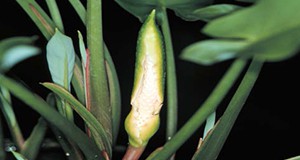 Arrow arum is a native aquatic and wetland plant that is a welcome addition to water gardens, aquatic ponds, and wetland restoration and mitigation sites. The species is broadly adapted and extremely common throughout Florida, and its perennial nature assures a stellar performance year after year. This new 3-page fact sheet provides an overview of this plant and discusses its distribution, habitat, propagation, and other uses. Written by Kimberly A. Moore, Luci E. Fisher, Carl J. Della Torre III, and Lyn A. Gettys, and published by the UF Department of Agronomy, October 2015.
Arrow arum is a native aquatic and wetland plant that is a welcome addition to water gardens, aquatic ponds, and wetland restoration and mitigation sites. The species is broadly adapted and extremely common throughout Florida, and its perennial nature assures a stellar performance year after year. This new 3-page fact sheet provides an overview of this plant and discusses its distribution, habitat, propagation, and other uses. Written by Kimberly A. Moore, Luci E. Fisher, Carl J. Della Torre III, and Lyn A. Gettys, and published by the UF Department of Agronomy, October 2015.
http://edis.ifas.ufl.edu/ag400
The Cost of Food Safety
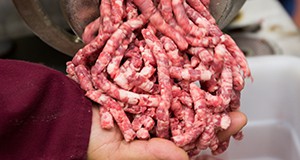 This new publication discusses the costs and long-term benefits associated with the implementation of food safety programs. This 5-page fact sheet covers the history of HACCP, costs associated with the application of food safety programs, reasons to improve food safety, and the financial impact of foodborne illnesses. Written by Annelys Hessing, Renée Goodrich Schneider, Alan Gutierrez, Rachael Silverberg, Michael S. Gutter, and Keith R. Schneider, and published by the UF Department of Food Science and Human Nutrition, October 2015.
This new publication discusses the costs and long-term benefits associated with the implementation of food safety programs. This 5-page fact sheet covers the history of HACCP, costs associated with the application of food safety programs, reasons to improve food safety, and the financial impact of foodborne illnesses. Written by Annelys Hessing, Renée Goodrich Schneider, Alan Gutierrez, Rachael Silverberg, Michael S. Gutter, and Keith R. Schneider, and published by the UF Department of Food Science and Human Nutrition, October 2015.
http://edis.ifas.ufl.edu/fs270
Sizzle and Passionista: Two New Lance-Leaved Caladium Cultivars
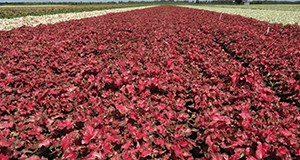 Many lance-leaved cultivars often produce small tubers, making it difficult for growers to produce tubers profitably. ‘Sizzle’ and ‘Passionista’ are two new lance-leaved caladium cultivars with improved tuber yield potential. The availability of ‘Sizzle’ and ‘Passionista’ may expand the color palette for caladium plants desired by greenhouse growers, nurseries, and gardeners. This 7-page fact sheet discusses the cultivars' tuber yield potential, container trials, landscape performance, growing recommendations, and availability. Written by Zhanao Deng, and published by the UF Department of Environmental Horticulture, December 2015.
Many lance-leaved cultivars often produce small tubers, making it difficult for growers to produce tubers profitably. ‘Sizzle’ and ‘Passionista’ are two new lance-leaved caladium cultivars with improved tuber yield potential. The availability of ‘Sizzle’ and ‘Passionista’ may expand the color palette for caladium plants desired by greenhouse growers, nurseries, and gardeners. This 7-page fact sheet discusses the cultivars' tuber yield potential, container trials, landscape performance, growing recommendations, and availability. Written by Zhanao Deng, and published by the UF Department of Environmental Horticulture, December 2015.
http://edis.ifas.ufl.edu/ep527
Implementing the Four Rs (4Rs) in Nutrient Stewardship for Tomato Production
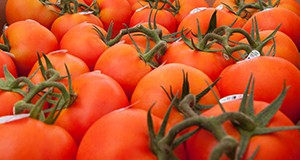 Fertilization plays a critical role in tomato production across the state of Florida. However, appropriate fertilization management depends on four major components (4Rs): right source, right rate, right placement, and right timing. Farming practices that follow the 4Rs can provide nutrients for optimal tomato productivity while minimizing the risk of nutrient losses and adverse environmental effects, both of which are important to the development of agricultural sustainability. This 6-page fact sheet discusses the 4Rs as well as conventional dry source fertilizers, controlled-release or slow-release source fertilizers, and liquid source fertilizers. Written by Qingren Wang, Guodong Liu, Kelly Morgan, and Yuncong Li, and published by the UF Department of Horticultural Sciences, October 2015.
Fertilization plays a critical role in tomato production across the state of Florida. However, appropriate fertilization management depends on four major components (4Rs): right source, right rate, right placement, and right timing. Farming practices that follow the 4Rs can provide nutrients for optimal tomato productivity while minimizing the risk of nutrient losses and adverse environmental effects, both of which are important to the development of agricultural sustainability. This 6-page fact sheet discusses the 4Rs as well as conventional dry source fertilizers, controlled-release or slow-release source fertilizers, and liquid source fertilizers. Written by Qingren Wang, Guodong Liu, Kelly Morgan, and Yuncong Li, and published by the UF Department of Horticultural Sciences, October 2015.
http://edis.ifas.ufl.edu/hs1269
Bitter Melon: An Asian Vegetable Emerging in Florida
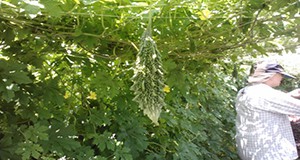 Bitter melon is a tropical and subtropical vegetable crop with long climbing vines which is widely cultivated in Asia, Africa, and the Caribbean. The unripe fruit is used as a vegetable with a pleasantly bitter taste. This 7-page fact sheet provides an overview of this plant as well as recommendations for individuals in Florida who are interested in growing it. Written by Guodong Liu, Qingren Wang, Yuncong Li, David Dinkins, Bonnie Wells, and Yuqi Cui, and published by the UF Department of Horticultural Sciences, December 2015.
Bitter melon is a tropical and subtropical vegetable crop with long climbing vines which is widely cultivated in Asia, Africa, and the Caribbean. The unripe fruit is used as a vegetable with a pleasantly bitter taste. This 7-page fact sheet provides an overview of this plant as well as recommendations for individuals in Florida who are interested in growing it. Written by Guodong Liu, Qingren Wang, Yuncong Li, David Dinkins, Bonnie Wells, and Yuqi Cui, and published by the UF Department of Horticultural Sciences, December 2015.
http://edis.ifas.ufl.edu/hs1271
Long Squash: An Asian Vegetable Emerging in Florida
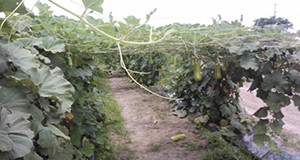 Long squash is an annual, vigorous, and herbaceous crop that was brought to the Americas by Paleoindian populations from Asia before the arrival of Columbus. This 4-page fact sheet provides an overview of this plant as well as recommendations for individuals in Florida who are interested in growing it. Written by Guodong Liu, Yuncong Li, David Dinkins, Bonnie Wells, Qingren Wang, and Yuqi Cui, and published by the UF Department of Horticultural Sciences, December 2015.
Long squash is an annual, vigorous, and herbaceous crop that was brought to the Americas by Paleoindian populations from Asia before the arrival of Columbus. This 4-page fact sheet provides an overview of this plant as well as recommendations for individuals in Florida who are interested in growing it. Written by Guodong Liu, Yuncong Li, David Dinkins, Bonnie Wells, Qingren Wang, and Yuqi Cui, and published by the UF Department of Horticultural Sciences, December 2015.
http://edis.ifas.ufl.edu/hs1272
Preventing Foodborne and Non-foodborne Illness: Vibrio parahaemolyticus
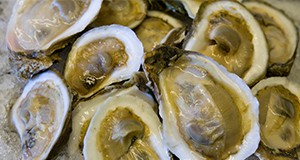 Vibrio parahaemolyticus is a naturally occurring bacterium that inhabits coastal brackish marine waters throughout the world and is commonly found in the United States and Canada. If ingested in sufficient numbers, this bacterium can cause illness such as gastroenteritis with symptoms such as cramps, vomiting, and nausea. Illnesses linked with this organism are usually associated with the consumption of raw or improperly cooked seafood, particularly raw oysters. This 3-page fact sheet is a major revision that discusses Vibrio parahaemolyticus, illness caused by the bacterium, factors that increase risk of infection, methods of infection, seafood and shellfish handling recommendations, and prevention. Written by Anita C. Wright, Renée M. Goodrich, Michael A. Hubbard, and Keith R. Schneider, and published by the UF Department of Food Science and Human Nutrition. Original publication date: July 2009. Revised October 2015.
Vibrio parahaemolyticus is a naturally occurring bacterium that inhabits coastal brackish marine waters throughout the world and is commonly found in the United States and Canada. If ingested in sufficient numbers, this bacterium can cause illness such as gastroenteritis with symptoms such as cramps, vomiting, and nausea. Illnesses linked with this organism are usually associated with the consumption of raw or improperly cooked seafood, particularly raw oysters. This 3-page fact sheet is a major revision that discusses Vibrio parahaemolyticus, illness caused by the bacterium, factors that increase risk of infection, methods of infection, seafood and shellfish handling recommendations, and prevention. Written by Anita C. Wright, Renée M. Goodrich, Michael A. Hubbard, and Keith R. Schneider, and published by the UF Department of Food Science and Human Nutrition. Original publication date: July 2009. Revised October 2015.
http://edis.ifas.ufl.edu/fs146